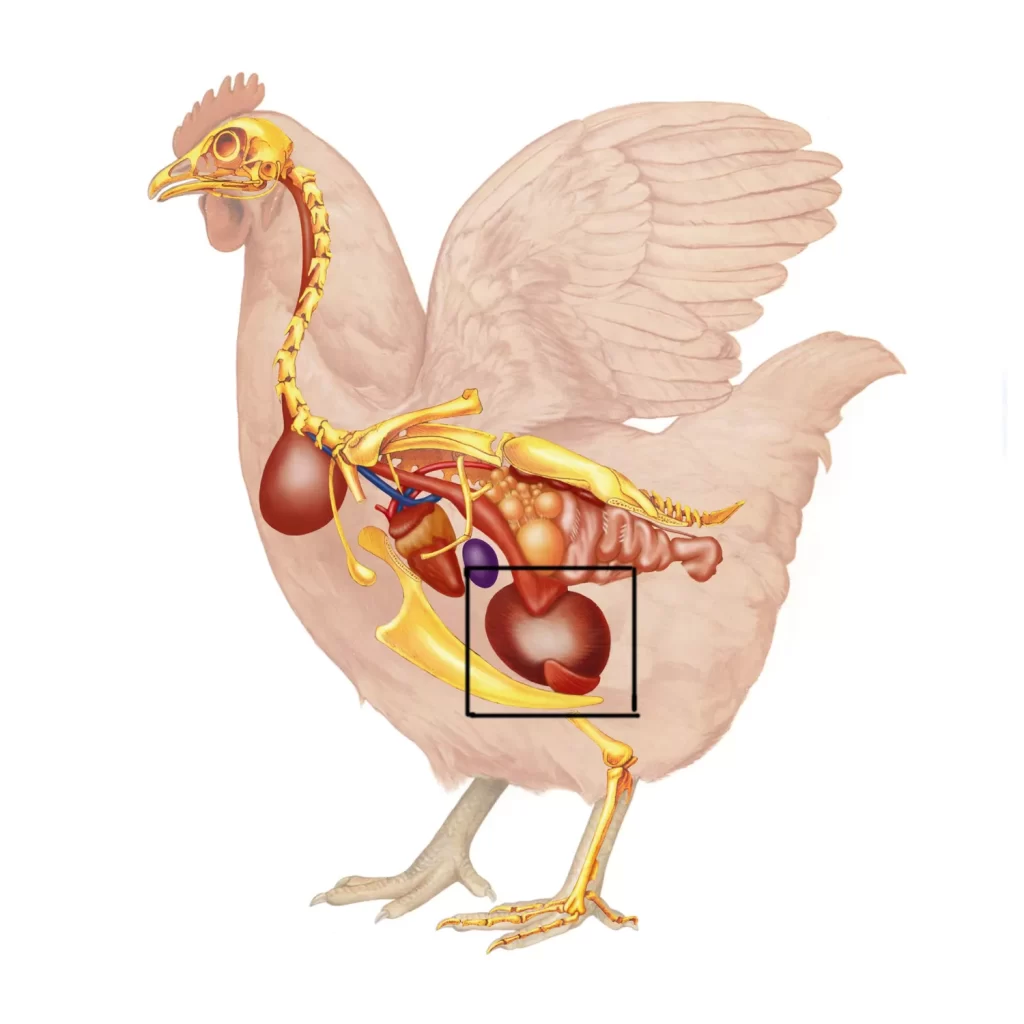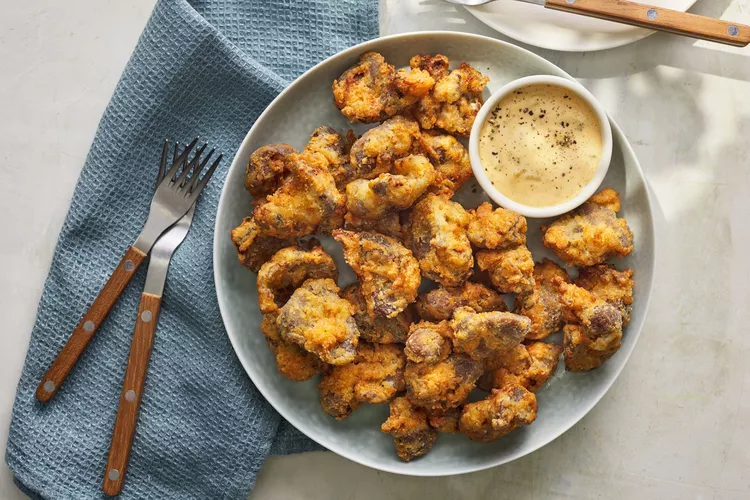Apparently, some people find these to be tasty. I’m not going to try to convince you of that today. You will, instead, learn what a gizzard is and what it does. By the way, chickens are not the only animal with a gizzard. Birds, dinosaurs, crocodiles, alligators, earthworms, some gastropods, some fish, and some crustaceans also have some form of a gizzard. At the end of this brief post, you will know more about chicken gizzards than 99.9% of the people you meet.
Chickens Don’t Have Teeth. Everyone knows that.

Have you ever asked yourself, “How do chickens eat without teeth?” No? Just me? Well, it’s a perplexing question, and the answer lies with the gizzard.
Chickens take in food with their beaks, by pecking feed, grains, insects, and other morsels into their mouths. This food then travels down the esophagus, with the help of a little saliva and digestive enzymes. From here it makes its way to the crop, which is basically a storage compartment at the base of the esophagus where food can be stored for up to 12 hours. Finally, the food trickles from the crop down to the gizzard, where the food is physically ground up. Refer to the illustration above to see where the gizzard is located within the digestive tract.
So there you have it — a chicken gizzard is basically the stomach of the chicken. It’s made of muscular walls that contract. The gizzard is aided by gritty, sand-like particles the chickens ingest as they peck that help to grind the food so that it may pass to the small intestine, where nutrients are absorbed. So, why don’t chickens have teeth? They don’t need them! The gizzard does all the work.
Chickens aren’t the only animals with gizzards. They can be found in the digestive tracts of many animals, including crocodiles, alligators, birds, earthworms, some fish, and some crustaceans.
Because they are a muscle, gizzards tend to be quite chewy and taste like dark meat chicken. Despite their small size, gizzards are packed with protein, and low in fat, making them one of the healthiest parts of the chicken.
Gizzards vs. Giblets
Gizzards are always giblets. But giblets are not always gizzards. Okay, enough riddles. The term giblets simply refers to a group of miscellaneous chicken parts, including the gizzard, the heart, the kidneys, the neck, and the liver.
Where to Buy Chicken Gizzards
:max_bytes(150000):strip_icc():format(webp)/Raw-chicken-gizzards-by-mikroman6-2000-769a332c27214909bafa4a9a1ac3f678.jpg)
You don’t have to search very hard to find gizzards. They can be found at most supermarkets in the butcher section. Gizzards sold commercially at the supermarket will already be cleaned.
However, if you’re purchasing gizzards from the farmers’ market or a local butcher, be sure to ask if they have been cleaned or not. If they haven’t, you can either request that they be cleaned (they may charge a fee for this) or you can clean them yourself. Either way, cleaning them is a must, because, after all, gizzards are a part of the digestive system and could contain particles not safe for human consumption.
How to Prep and Cook Chicken Gizzards
If your gizzards haven’t already been cleaned, that’s your first step. Start by cutting the gizzard in half lengthwise. Now you can wash the sediment away using your fingers and running water. Once the gizzard is clean, peel away the yellow-tinted lining. Now you’re ready to get cooking!
In general, gizzards do best when cooked low and slow, with moist heat. Because they are already a dense and chewy muscle, cooking them on high heat will only cause them to toughen up even more. This Chicken Gizzards recipe simmers the gizzards for over an hour, so you get the most tender result. A pressure cooker is an ideal vessel for cooking gizzards.
In the American South, you’ll often find gizzards served fried. Give this top-rated Southern Fried Chicken Gizzards recipe a try next time you want tender, breaded gizzards.
How to Store Chicken Gizzards
Raw gizzards should be the first thing to go in your fridge when you get home from the supermarket. Keep them sealed in an airtight container or plastic bag to prevent cross-contamination. Use within two days, or freeze in an airtight container for up to four months.
Because gizzards are muscles, they can be tough and chewy, but you can cook them using low and slow moist heat to make them tender. Here are some ways to cook gizzards:
- Stewing, braising, or slow cooker: Cook on low heat with moist heat. The ideal temperature is between 180º and 210º F, which allows the connective tissues to soften and become gelatinous.
- Boiling: Rinse the gizzards and place them in a pot covered with water. Bring to a boil, then reduce heat to a simmer and cook until tender, which can take 30–45 minutes. You can also add aromatics like garlic or onion while boiling. After boiling, you can remove the gizzards and let them cool for at least 30 minutes. Buttermilk can also help tenderize gizzards.
- Before frying or sauteing: Gently boil gizzards before frying or sauteing to help tenderize them.


Welcome to 3-Minutes A Day University, where you can learn a little about a lot of things every day in three minutes or less. We help you expand your knowledge and understanding of the real world, and 3-MAD University is tuition-free. Our wide-ranging syllabus includes a fascinating insight into topics including Health and Medicine, Science, Sports, Geography, History, Culinary Arts, Finance and the Economy, Music and Entertainment, and dozens more. You will impress yourself, your friends, and your family with how easy it is to learn facts and perspectives about the world around you. One topic you will never find covered is politics. We hope you enjoyed the previous three minutes. If you liked this post, please pass it along to a friend.
Was this email forwarded to you? Subscribe Here.
© Copyright 2024. 3-Minutes A Day University All Rights Reserved. Unsubscribe

